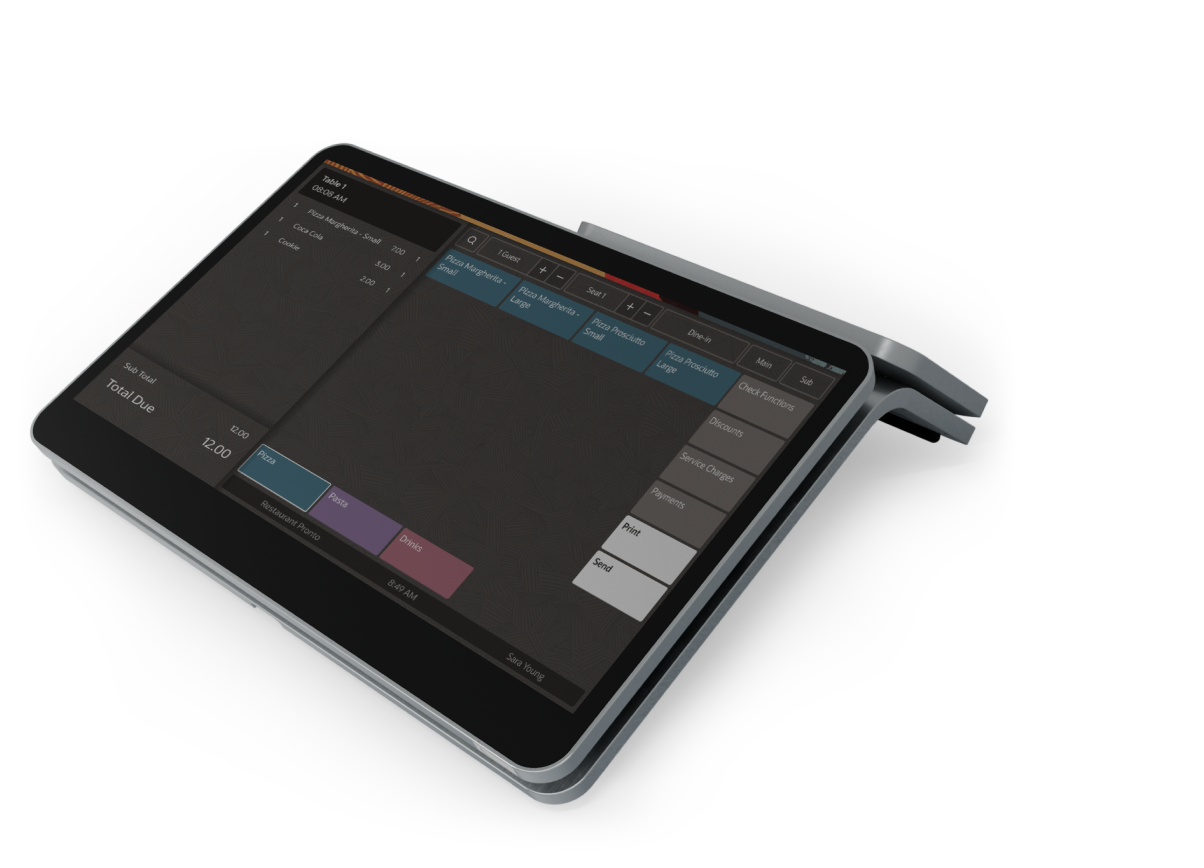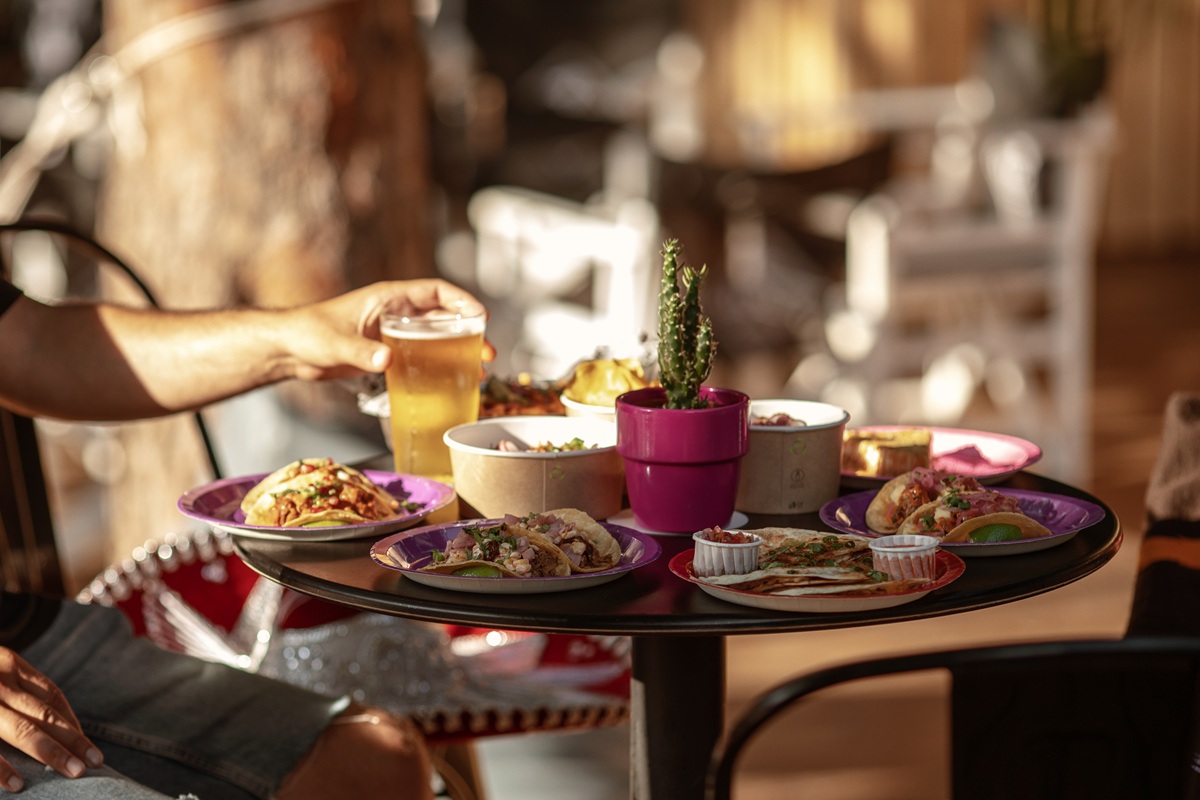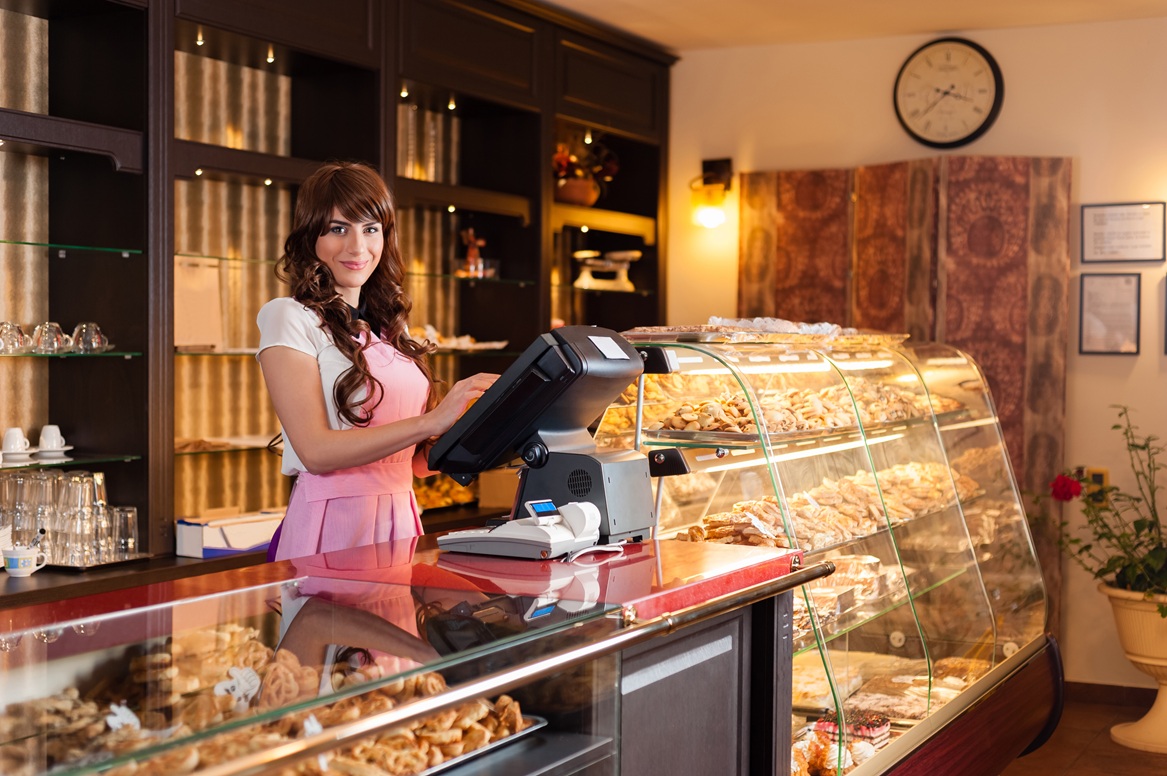- How to open a restaurant in California
- 1. Create a comprehensive business plan
- 2. Follow the California restaurant laws and regulations
- 3. Settle on a convenient location
- 4. Choose the best restaurant insurance
- 5. Acquire the necessary equipment
- 6. Source your ingredients
- 7. Get the best restaurant POS system
- 8. Hire a productive team
- 9. Increase your earnings by selling online
- 10. Advertise your restaurant business
- Useful resources
- Frequently asked questions
To open a restaurant in California, you need to develop a business plan, obtain the licenses and permits required by the state of California, find a suitable location, and look for the best type of insurance. Then, acquire equipment, source your ingredients, hire staff, find the right technology for your restaurant, and craft a bulletproof marketing plan.
California has a diverse restaurant industry with 86,779 businesses in 2025. If you want to become the 86,780th food place, check out this comprehensive guide on how to open a restaurant in California.
How to open a restaurant in California
Each location is different. If you want your restaurant to succeed, you need to create a business that is not only compliant with local laws and regulations but is also to the locals’ liking. Follow these steps to open a restaurant in California:
- Craft a solid business plan
- Check out California’s restaurant laws & obtain the necessary permits
- Find a location for your restaurant
- Choose the right type of insurance for your business
- Get the necessary equipment
- Source your ingredients
- Hire front and back-of-house staff
- Find the best POS for your restaurant
- Unlock an additional revenue channel by selling your food online
- Craft a marketing plan for your restaurant
1. Create a comprehensive business plan
A business plan will act as a guideline for starting a restaurant in California. It will help you have a unitary view of all parts of your business, and it can also serve as a selling point if you want to attract investors.
This is what you must include in your business plan:
- Mission statement: Why do you want to start a business? What makes your restaurant special? What benefits can you offer clients?
Example of a mission statement for a vegetarian restaurant in California:
“At [Restaurant Name], we are dedicated to celebrating the diverse flavors of California by creating a haven for plant-based enthusiasts and curious food lovers.
In the heart of California’s farmland, we use the freshest local produce and ingredients in every dish. Traditional recipes meet innovative techniques, resulting in delicious and visually appealing dishes.
As a team, we also want to share our passion for ethical and environmentally friendly practices with our customers. By supporting local farmers and reducing our carbon footprint, we contribute to a healthier planet.”
- Market research: Is there a lot of competition, or is there interest in the type of business that you want to open?
- Type of service: Are you planning on opening a restaurant with table-side service, or are you opting for quick-service?
- Operational plan: A detailed plan on how your restaurant will function, from acquiring ingredients, preparing food, to staff responsibilities, and crisis management.
- Financial plan: The estimated expenses and sales, up to the last dollar.
2. Follow the California restaurant laws and regulations
Here are the licenses and permits needed to open a restaurant in California, required at the state and federal levels:
- California Retail Food Code: Where at least one employee has to pass the Food Safety Certification examination, and all employees handling food must obtain a Food Handler Card;
- Alcohol license: From the California Department of Alcoholic Beverage Control (ABC) if you want to sell alcohol on premises;
- California Secretary of State (SOS) Filing: Is not required for sole proprietors, but it is necessary if you plan to form a partnership or corporation;
- Income Taxes: You must file the State income tax with the Franchise Tax Board (FTB) and the Federal taxes with the Internal Revenue Service (IRS);
- Seller’s Permit and Resale Certificate;
- Federal Employer Identification Number (EIN).
On top of these, there are some restaurant permits and licenses in California that are established by the city and county, such as:
- California Business License;
- Fictitious Business Name: also known as Doing Business As (DBA), can be obtained from the county and is necessary when the business name does not include the surname of the owner;
- Certificate of occupancy;
- Health safety permit.
Check out these resources that will help you get your restaurant started in California:
- California Business Portal: to help you get your business started with useful information on permits, licenses, and incentives;
- CalGOLD: you can use this tool to identify federal, state, and local permits and licenses necessary for your restaurant business;
- California Department of Tax and Fee Administration: for seller’s permits and sales tax registration;
- California Department of Alcoholic Beverage Control: where you need to apply for an alcohol license.
3. Settle on a convenient location
California spreads over an area of 163,696 square miles. How can you choose the perfect spot for your restaurant? Follow these tips:
- Go where your target audience is: Part of creating your business plan is identifying who your main clients will be. You should create a profile including demographics and food preferences so you can choose a location next to their homes or workplaces;
- Look for places with few competitors: For example, if you want to open a place with Mexican cuisine near many other restaurants that serve the same type of food, you will have a hard time getting noticed. A few competitors are ok because it shows you that there is interest in your type of cuisine;
- Take into account the cost for renovations and rule compliance: The location cost will already be expensive, so you should ideally find a space that requires little renovation to become a working restaurant. Moreover, look for spaces that are already ADA compliant and that follow seismic regulations;
- Choose an accessible location: Clients are more likely to visit your place if they can reach it easily using both personal cars and public transport.
4. Choose the best restaurant insurance
No matter how well you run your restaurant business, accidents happen. The best you can do is be prepared for them. First, with standard operating procedures that detail how to act if something unfortunate happens. And secondly, by getting insurance to protect your business.
Here are a couple of examples:
- General liability insurance
- Property insurance
- Liquor liability insurance
- Food contamination insurance
- Worker’s compensation insurance
5. Acquire the necessary equipment
When you are planning how to open a restaurant in California, you will have a couple of main costs you have to account for: rent, labor, ingredients, and equipment.
Here are the main pieces of equipment you will have to budget for, divided by purpose:
- Food storage: fridges, freezers;
- Food preparation: oven, microwave, prep tables, grill, deep fryer, food processor, cutting boards, cooking utensils;
- Serving: platters, plates, cutlery;
- Cleaning: cleaning supplies, cleaning storage separate from the food, sinks, and washing machines;
- Packaging: boxes and containers for online orders. You can look for recyclable ones if you want to be more environmentally friendly.
6. Source your ingredients
Most restaurant owners list food costs as their biggest expense. When opening a restaurant in California, you must choose certified suppliers to prevent any problems related to food contamination.
Moreover, if you want to keep your profit high and prices affordable, consider creating a seasonal menu with seasonal ingredients. For this, you will need to get in contact with local organic farms and eco-conscious producers to source your produce.
Here are some tips on finding the best local organic suppliers for your ingredients:
- Go to local farmers’ markets: California is famous for its farmers’ markets, which can be a great place for you to connect with organic farmers who might be interested in supplying you with high-quality, locally sourced produce. Plus, you get to sample their products firsthand.
- Check the California Certified Organic Farmers directory of members to find potential suppliers.
- Use online platforms like FarmMatch, which connect farmers and consumers.
- Attend food conferences, trade shows, and other industry events in the area.
- Look for relevant hashtags on social media to discover potential suppliers, such as #CaliforniaOrganicFarms or #FarmToTableCalifornia.
Once you have found your suppliers, you need to craft your menu. To make it easy for you to make changes to the menu, say goodbye to paper menus and enable on-premise ordering via QR code. With GloriaFood, you can create an online restaurant menu in minutes that allows you to:
- Set items as Out of Stock when you run out of ingredients;
- Make menu items available only during certain days or hours;
- Enable customers to customize their dishes with sizes, toppings, and add-ons;
- List food allergens and nutritional values for each menu item;
- Add irresistible promotions to the top of your menu.
After your menu is done, you can generate the QR code for free, print it, and stick it on every table. Once seated, clients can scan the code, browse the menu, order, and pay by simply using their phones.

7. Get the best restaurant POS system
When you open a restaurant in California, you have to use technology that will increase client satisfaction, make your work easier, and make you stand out from your competitors. The perfect example of such technology is the GloriaFood restaurant POS system.
This affordable POS not only makes order and payment processing a breeze, but also comes with a variety of included features that take your restaurant to the next level:
- Serve every customer by accepting a variety of payment methods, be it cash, credit or debit card, smartphone, or smartwatch;
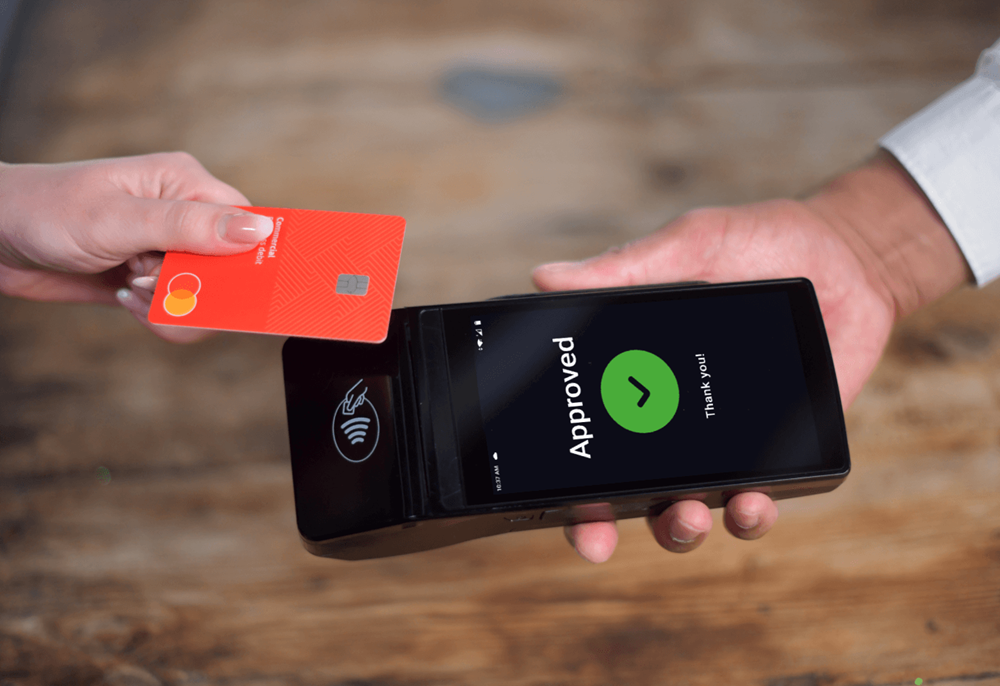
- Increase the speed of service with a customized dashboard for your type of business. With a color-coded menu, employees can place orders instantly, no matter if you run a bar, a food truck, a deli, or a bakery;
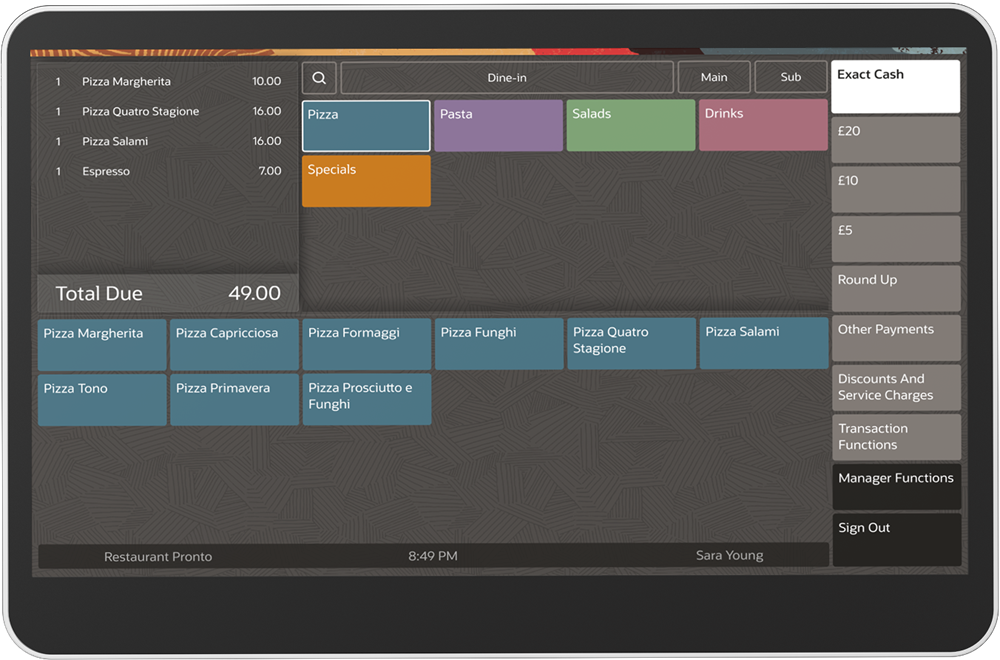
- Make your operations more efficient by connecting more printers to the POS and sending orders directly to the different kitchen stations;
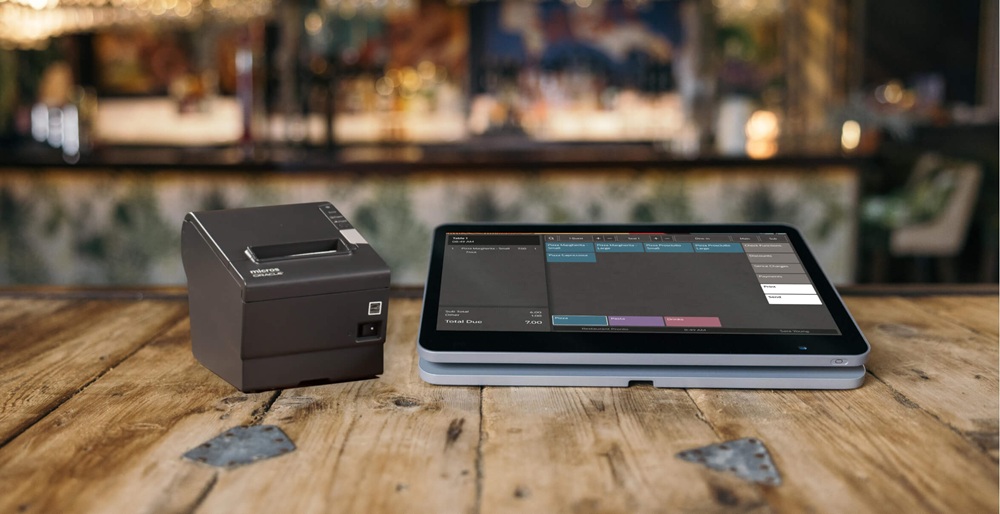
- Manage staff easily by monitoring their activity in detail;

- Get access to in-store and online reports that help you grow your business. You can get an overall view of your clients and sales, and also discover possible fraud and identify best-selling menu items;

- Keep working even if the internet is down with the offline mode;
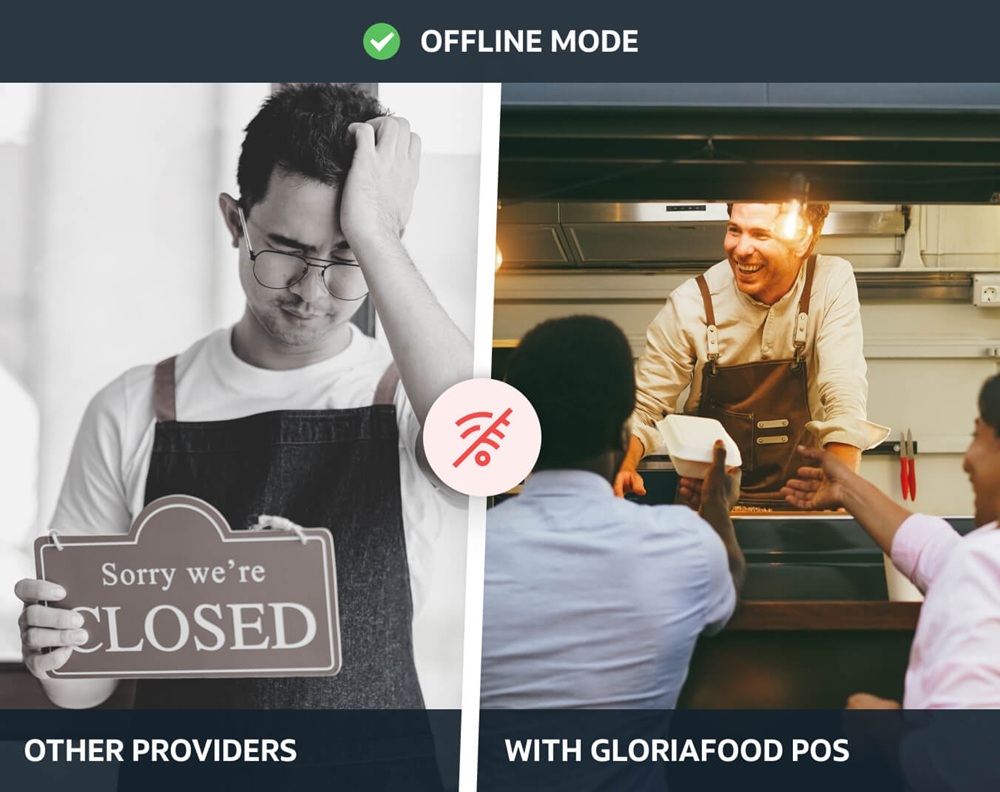
- Get constant support and training materials that make the installation process fast and easy.
Use the GloriaFood POS to offer better service than your competitors
Get started by ordering your free POS starter kit
I want my POS8. Hire a productive team
How to open a restaurant in California? Start by hiring the best candidates who will be the backbone of your business. Be clear in your job announcement and during the interview about their future responsibilities and what your business’s values are.
This way, you can attract employees who share them. Furthermore, if you want to increase employee retention, consider offering bonuses and extra benefits that will keep your team happy and satisfied with their jobs.
Here are a few tips and tricks on hiring restaurant staff in California:
- Post your job openings on popular job boards like Indeed, Craigslist, and LinkedIn, which are widely used in California.
- Liaison with local culinary schools and hospitality programs, which may be able to connect you with recent graduates seeking employment.
- Attend career fairs and networking events in the restaurant industry to meet potential candidates.
- When you create your labor budget, you should know that California has a minimum wage. Starting January 1st, 2025, the minimum wage for restaurant workers is $16.50 per hour. There is an exception for fast food employees for chains with more than 60 locations, where the minimum is $20 per hour. Moreover, while this is the state law, it can be overridden by the city or county law. For example, in San Francisco, the minimum wage is $18.67 per hour.
After you have hired the perfect team, you will have to manage them to ensure productivity. Good news, the GloriaFood POS system has an embedded staff management feature that helps you:
- Add, remove, and update employee information in a few clicks;
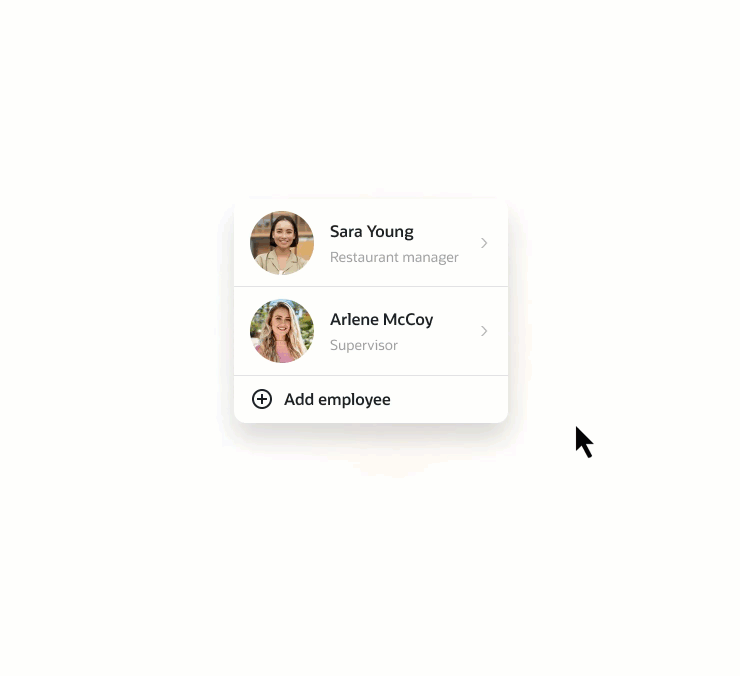
- Train new employees with the Training module, where you show them how to use the POS without affecting your financial statement;
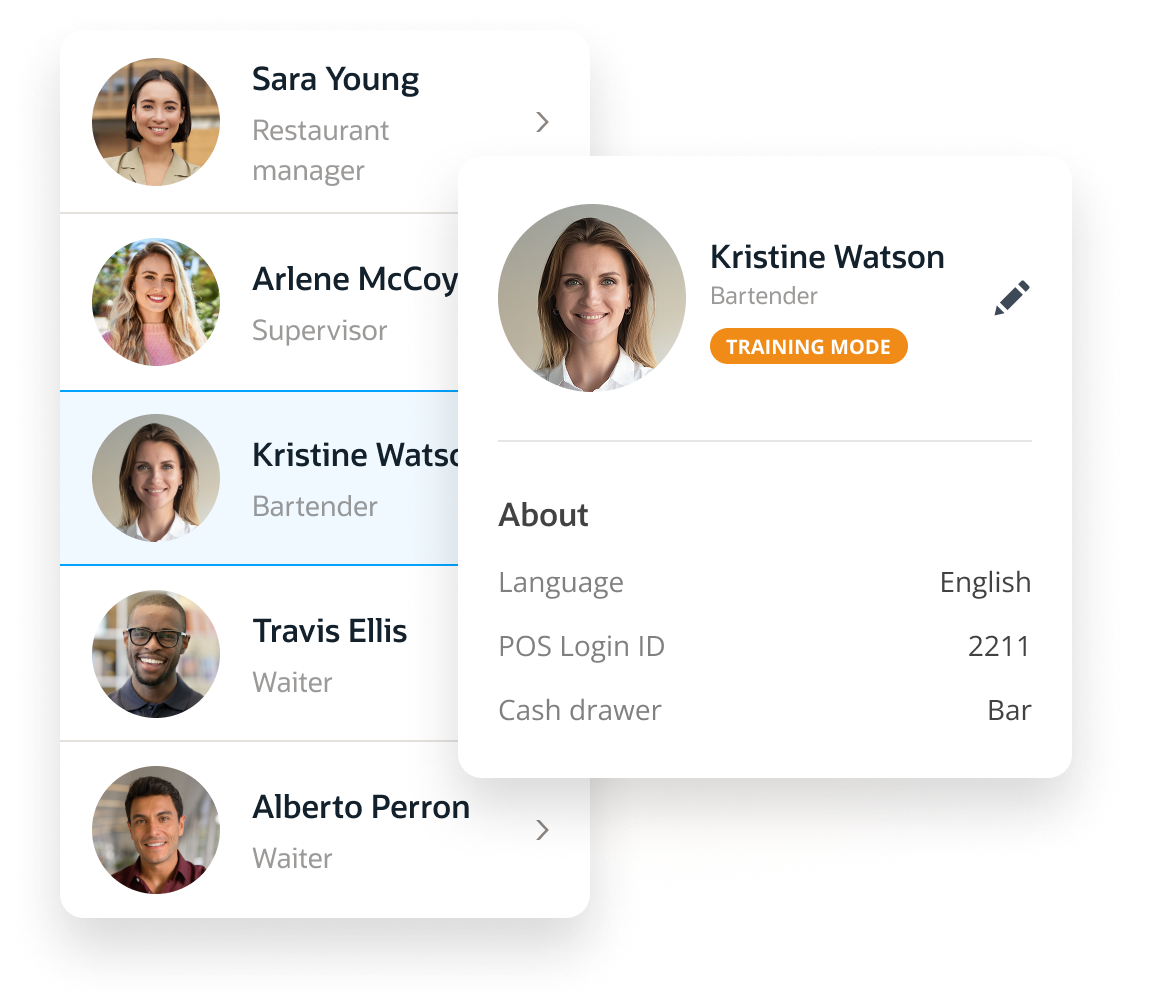
- Assign different responsibilities, such as only allowing cash drawer access to senior members;

- Track employee activity, including orders, payments, and refunds;
- Provide speed of service with fast RFID card login;
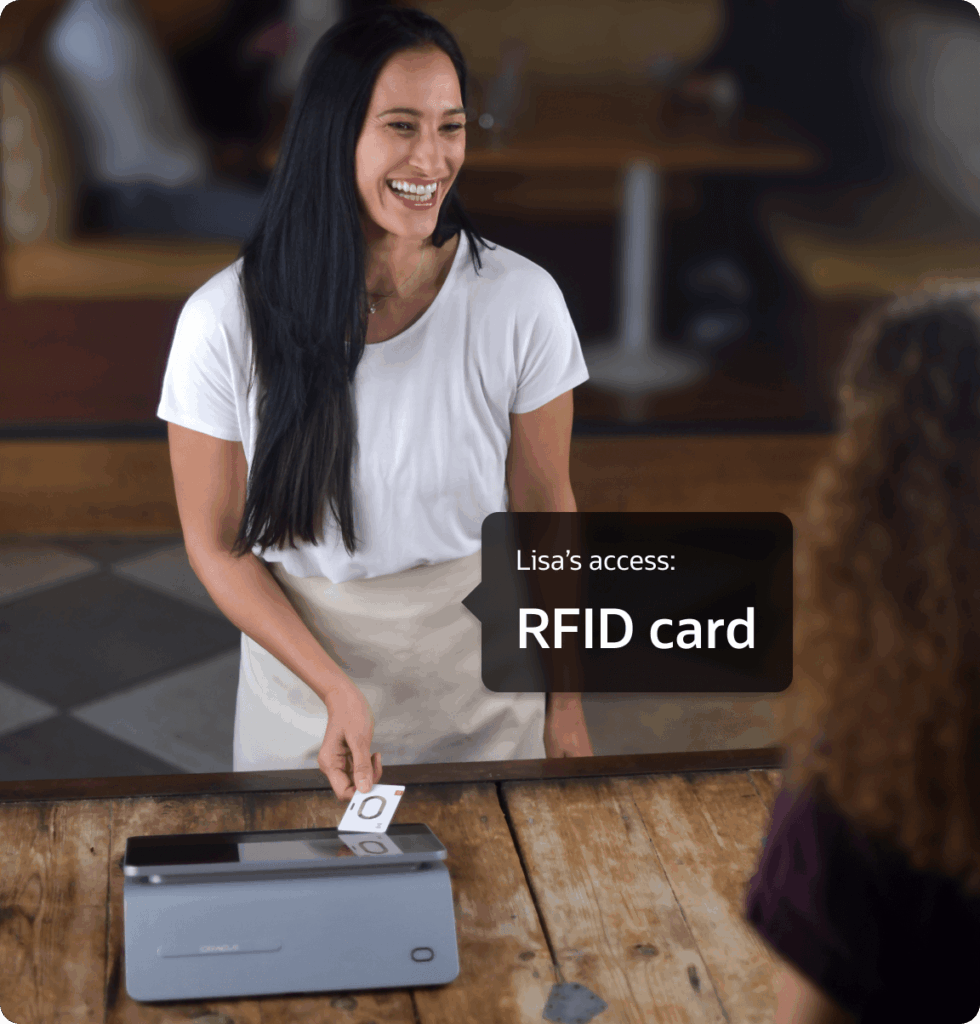
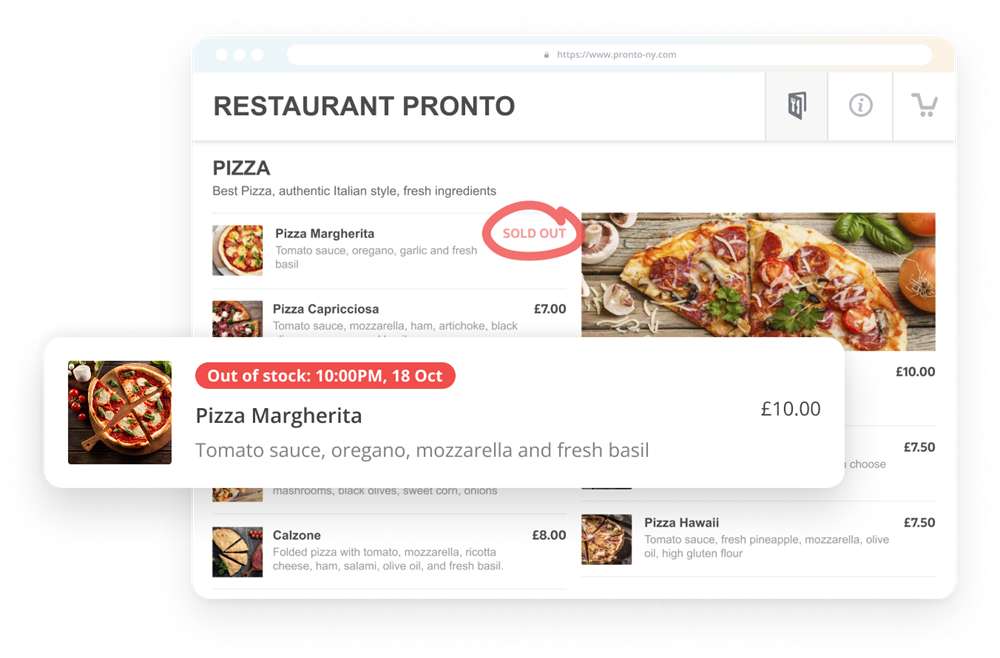
9. Increase your earnings by selling online
You don’t just need to know how to open a restaurant in California, you must also know how to increase your profit and make your business last. A key component for this is offering online ordering.
No matter how big or small your restaurant will be, you will have a limited number of seats. If you want to sell more, you need to use the free online ordering system from GloriaFood to sell your food online.
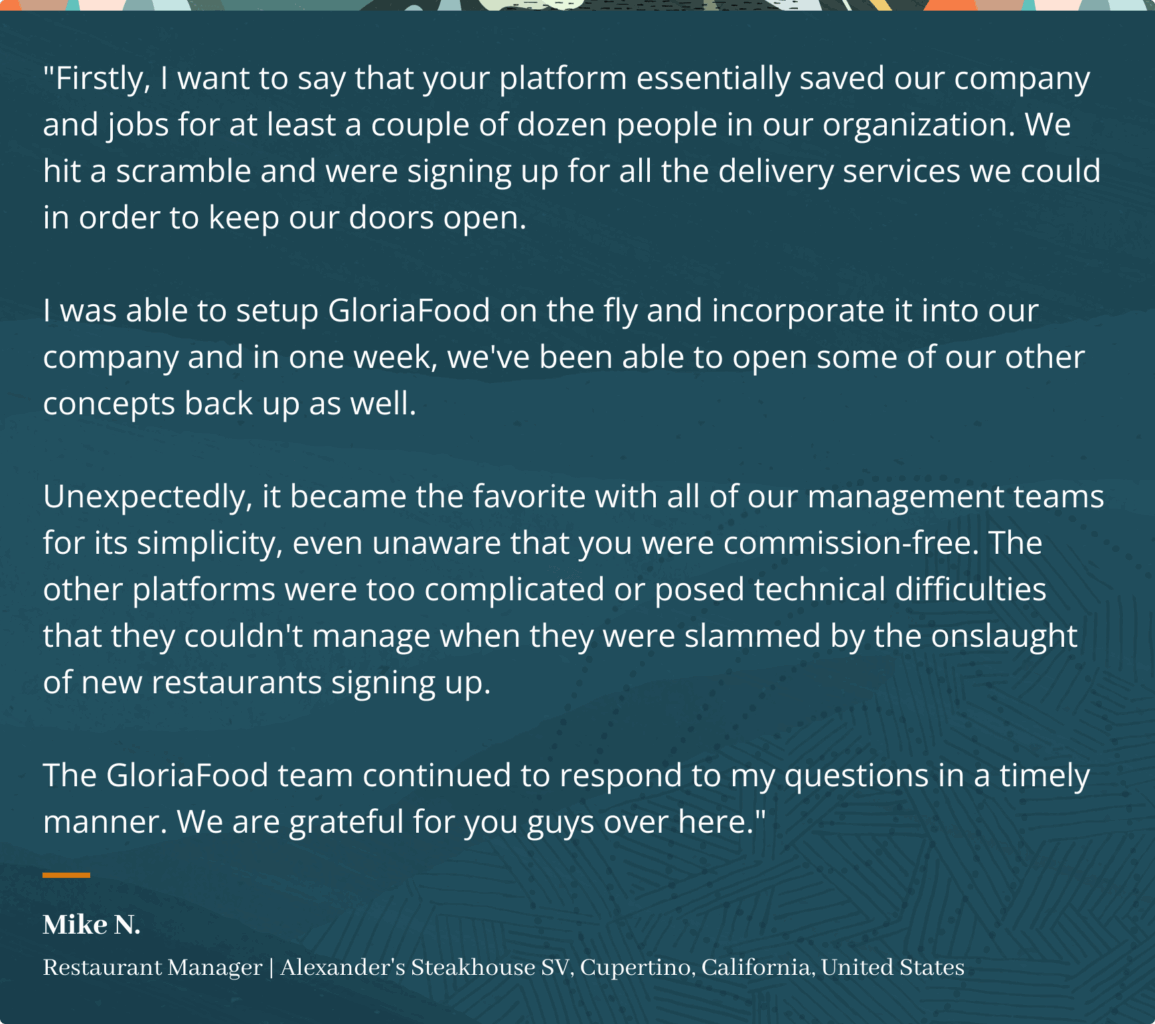
Unlock a new revenue stream: sell your food online
Use the free GloriaFood online ordering system to keep all the profits you make
Install it on your websiteYou can say goodbye to hidden fees from third-party apps and choose to have complete control over the online ordering process. The set-up process only takes you 10 minutes:

Moreover, the online ordering system comes with a built-in restaurant analytics dashboard where you can find a variety of useful data, such as:
- Number of orders and reservations;
- New and returning clients;
- Preferred payment methods;
- Most ordered menu items;
- Efficient promotions;
- Delivery Heatmaps to identify where most of your orders come from;
- Online ranking.
10. Advertise your restaurant business
Starting a restaurant in California can seem intimidating, but one of the keys to success is efficient promotion of your restaurant. If you get the word out about your restaurant and tempt customers with irresistible food, you will soon have your tables filled.
Check out these essential tips for marketing your restaurant:
- Get a sales and SEO-optimized website that will help you rank high in searches and lead people to the menu button. You can use the restaurant website builder from GloriaFood to generate an intuitive website focused on selling your delicious food.

- Complete your Google Business Profile: link to your website and menu to encourage people to place orders. Moreover, update your working hours and add a variety of mouth-watering pictures of your food to draw people in;
- Post constantly on social media: grow your following by making it a habit to post at least once a day and interact with people by replying to messages and comments. You can also try contests and paid ads to reach a larger audience;
- Add promotions to your menu: hungry customers won’t be able to resist a great deal. For example, free delivery, free item for orders over a certain amount, or a combo deal. You can use the Promotions module from GloriaFood to set up a variety of tried and tested offers in seconds;

- Consider collaborating with local California food influencers who can promote your restaurant to their followers. You can find some by checking this directory of top 100 California food influencers in 2025.
- Reach out to complementary food businesses in the area for cross-promotion. For example, a hotel might encourage its guests to eat at your restaurant, and you can provide a small discount for them.
- Advertise your restaurant in local newspapers, magazines, or community newsletters for California residents.
- Reach out to local food critics and journalists and invite them to dine at your restaurant and share their review with their audience.
- Start email marketing campaigns: to keep people interested in your restaurant. With the Autopilot module from GloriaFood, you can send personalized emails to your customers that will prevent cart abandonment, encourage second orders, and reengage clients.

Final words
You now know the basics of how to open a restaurant in California. It is time for you to do the hard work to choose a location, a type of cuisine, and create a space that follows all laws and regulations.
Once you open, you know you can rely on the GloriaFood ecosystem to not only make your work easier but also increase operational efficiency and boost your profit.
Want to continue delving into the topic of opening and leading a restaurant to success? Keep reading!
Frequently asked questions
To open a business in California, follow these steps:
- Create a bulletproof business plan
- Follow the California restaurant laws and regulations
- Choose your dream location
- Find the best restaurant insurance
- Purchase the necessary equipment
- Source your ingredients
- Find the best restaurant POS system
- Hire a productive team
- Unlock a new revenue stream by selling your food online
- Market your restaurant
Opening a restaurant in California can cost between $150,000 and $2 million, depending on factors such as size, location, concept, and whether you’re buying or renting a place.
According to Glassdoor, the median pay for a restaurant owner in California is $96,000/year, with a range of $75,000 to $125,000.
To learn the specific food regulations in California, you need to consult the California Retail Food Code, which covers sanitary practices for food retailers.
Additionally, the California Food Safety Act of 2023 bans brominated vegetable oil, potassium bromate, propylparaben, and Red Dye 3 from food products sold in the state.
All of the regulations above are enforced by the California Department of Public Health (CDPH).
The food handler’s law in California requires all food employees to take a food safety training course and pass an exam to get a California Food Handler Card no more than 30 days after being hired. Employers must pay for the training and the exam, as well as compensate the employees for the time spent training and testing. The Food Handler Card is valid for 3 years.
- How to open a restaurant in California
- 1. Create a comprehensive business plan
- 2. Follow the California restaurant laws and regulations
- 3. Settle on a convenient location
- 4. Choose the best restaurant insurance
- 5. Acquire the necessary equipment
- 6. Source your ingredients
- 7. Get the best restaurant POS system
- 8. Hire a productive team
- 9. Increase your earnings by selling online
- 10. Advertise your restaurant business
- Useful resources
- Frequently asked questions
Get your restaurant POS system
More than [[restaurants_number]] customers have advanced their restaurant businesses with GloriaFood
